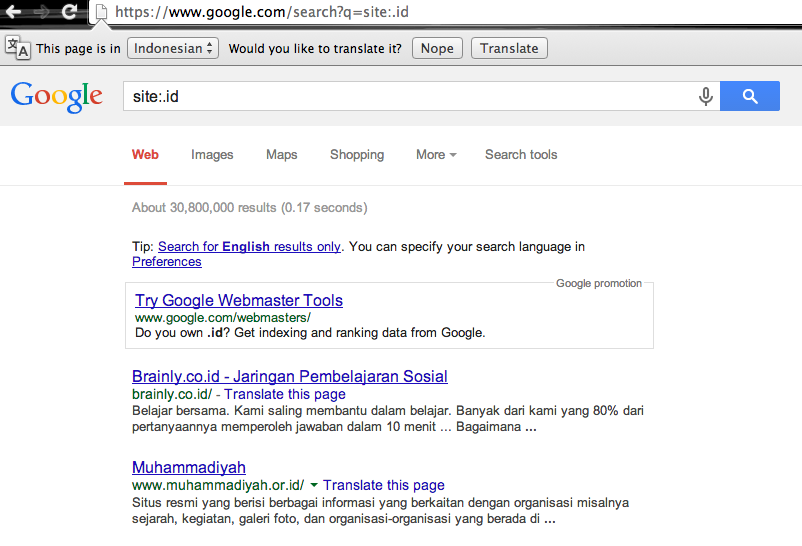Domain Hacks: Are They Worth It?
When trying to find the perfect domain name for your business, you may find the ideal .com is already taken. Luckily, .com is far from the only extension out there, and other top-level domain names (“TLDs”) offer the opportunity for more creative domain choices. Using a domain hack is one option you may want to consider.
What is a domain hack?
A “domain hack” is a domain name that suggests a word, phrase, or brand by combining two or more adjacent parts of the domain.
This may be accomplished by using a TLD that completes that desired word. While there are a limited number of generic TLDs available at this time, your options can be greatly expanded by using country-code TLDs (ccTLDs), many of which do not require local residency for registration.
Some popular examples of domain hacks used in the past are blo.gs and del.icio.us. As we’ll discover later on in this article, even these may be of questionable long-term value.
If you’re reading this post on The Jake Group website and not in an RSS reader, more examples can be found in the custom designed banner graphic at the top of the page.
Why use a domain hack?
When considering using a domain hack as your main business URL, it’s important to consider the strengths and weaknesses of such a strategy. Some reasons to consider a domain hack include:
- .com scarcity – The ideal .com domain for your website may be long gone. The owners could have an asking price far outside of your budget, or may simply be unresponsive. Domain hacks can be a relatively cheap alternative.
- Branding – Domain hacks can help accentuate your brand, and give your site a sense of modernity. For instance, music mogul, will.i.am, managed to acquire the domain i.am and uses the subdomain will.i.am for his website.
- URL shortening – This is particularly popular among big brands who are looking for a branded short URL to use on social media sites. Google uses goo.gl, for example.
Why not?
Before you rush to your nearest registrar to grab a domain hack, keep in mind there are a number of potential drawbacks you should consider:
- Google treats some ccTLDs differently. Many of them cannot be geotargeted in Webmaster Tools, due to their localized nature. Here’s a list of all the domains that Google recognizes as international.
- Political instability – Many ccTLDs are administered by foreign government institutions which have the ability to shut a domain down, leaving you with no realistic recourse. Libya shut down a .ly website for violating local law back in 2010. Although it doesn’t happen often, the risk is there.
- URL shortening policy changes – URL shortening on Twitter is now mostly a moot point, as they now count all URLs as a uniform length against the 140-character limit. Some systems such as Bit.ly offer analytics services for shortened, custom URLs, but there are other ways to track referring traffic as well. Check out our Google Analytics articles here on the JakeIntel blog for more information on that.
- Clarity – As clever as a domain hack may be, make sure to consider not just how it will appear in print, but also how it sounds when spoken. Anyone accustomed to using the Internet will understand the domain “sample.com” when you say it to them in conversation. But “samp.le” may not be clear.
Many of the prominent websites using domain hacks that we’ve used as examples have actually reverted to more typical domains for their primary web addresses (del.icio.us is now delicious.com; bit.ly is now bitly.com).
The hacks still work, but they seem to have found the traditional domains to be more useful for overall branding.
How to find one
Finding available domain hacks are easier said than done, although there are some online tools that can make the process easier. This online tool allows you to enter in a word, and it will generate any possible domain hack.
This tool not only spits out potential “standard” domain hacks (i.e. dav.id) but also introduces subdirectory hacks as well, such as da.vi/d/. As a bonus, the tool offers email hacks like d@v.id, which use the @ symbol in the email address as a makeshift letter-A.
How to buy one
Keep in mind, some more exotic extensions may not be available to register for foreigners, or may not be available at all. The mere fact that a country code has been delegated, does not necessarily mean it is active and in use.
Some countries may have favorable pricing for locals. Certain country code extensions that we’ll go over below can cost up to 10-times as much for a foreign applicant.
Is it available?
A quick way to check if the top level extension is actually in use is to run what we’ve uncreatively dubbed The Google Test. It involves running a query like so:
site:.id
Which will return all sites in Google’s index with the .id extension. The same extension that we used in our “David” domain hack example above.
We see that there are plenty of results for second level domains (example.co.id, etc.), there are no results for top level versions, such as dav.id.
Unfortunately for David, this suggests that top level domains in the .id extension are simply not available for purchase. That doesn’t mean it won’t be possible at some point in the future, however.
Bending the rules
Remember our will.i.am example above? One character .am domains are typically not available for registration. Without being privy to any sort deal information between will.i.am and the Armenian domain registry, it’s safe to say that power, influence, and money can go along way to securing the domain hack of your wildest dreams.
Before jumping through a lot of hoops though, just ask yourself if the domain hack aligns with your business goals. With all that money and power, you could probably get an awesome .com domain as well, which should be the first choice for your commercial website if it’s a viable option.
Technological Limitations
Some country codes require you to use archaic technology for maintaining your domain. Think faxing in a form every time you want to renew for another year, or simply updating your nameservers.
Payment methods can be a hassle, too. While most registrars will process credit card or PayPal payments, some require wire transfers or alternative forms of payment. For instance, if you want to register a .bs domain from the Bahamas, you have to pay by wire or in person.
Although taking a once-every-three years vacation to the Bahamas to renew a domain may not necessarily be a bad thing, just keep in mind some countries’ registries may not have the same easy credit card processing you’re used to with other online retailers.
Unfavorable Pricing
Also remember some extensions can get on the pricey side, especially if you’re not a local. The multi-character domain in the .tt extension (Trinidad and Tobago) costs $600 per three years for foreigners, compared to half that for local residents.
A top level Nambian domain (.na) costs a cool $7k per year for foreign registrations, compared to $675 for locals.
These entirely depend on the country. Some may be cheaper and easier to register and manage than others. It’s up to you to research the viability of purchasing a domain hack.
The Root Zone Database on the IANA website is a great place to start your research.
The Best of Both Worlds
We’ve explored the pros and cons of using a domain hack, for either your primary business URL or a complementary branded URL shortener. We’ve learned how to find possible domain hacks. Let’s take a look at some alternatives to get the best of both worlds.
.io
Although .io is technically a ccTLD (for Indian Ocean territories, if you must know) it is recognized as generic by Google due to its popularity among startups. This means you don’t have to worry about the potential domain hack downside of not being able to geotarget it in Webmaster Tools.
The .io extension also costs more than the average gTLD, at £60 per year for non-EU buyers. This means the practice of “squatting” is less prevalent in the .io extension, because it doesn’t make as much financial sense for “collectors” to buy them up at 7x the price of a .com.
This means quality .io domain are much more likely to be available versus their .com counterparts.
(Brand)App.com and Get(Brand).com
Though a preferred branded domain such as (Brand).com may be unavailable, you may be able to obtain domains like (Brand)App.com and Get(Brand).com. Some real life examples include the web-based time-keeping app, Harvest, which uses domains like HarvestApp.com and GetHarvest.com.
One caveat of this technique from successful startup, Dropbox. They started off on the domain GetDropbox.com, but realized many of their customers were going to Dropbox.com, so they had to acquire it at a premium.
They could’ve probably acquired it a lot cheaper before they became the successful company that they were at the time of the purchase back in 2009.
.anything
In case you haven’t heard the news, many new gTLDs are about to be released in the wild, with a lot more on the way.
Think .app, .blog, .anywordyoucanthink of. Time will tell how these new extensions are put to use, but it has the potential to completely change the game of domain names. If you have a spare $185,000 lying around, you can apply for your own.
(Would anyone be interested in a .jake domain by any chance??)
New gTLD Outlook
At the present time, these are so preliminary, it’s hard to say how successful they’ll be. It’s definitely something to keep an eye on, as it has the potential to flip the domain industry upside down.
With that said, through many new introductions of “exciting” TLDs, .com has presided as the clear winner in consumer’s minds. Although these “new gTLDs” are unprecedented, it’s not unreasonable to think that .com will still remain ingrained as the go-to domain extension for commercial endeavors.
In Summary

Though they offer an interesting alternative for branding your website, make sure you understand the risks of domain hacks and ccTLDs in general before launching and marketing your site with them.
Domain hacks may provide the most value as a secondary marketing strategy, while maintaining a more traditional domain for your main address.
- First and foremost, ccTLDs main purpose is for localized websites, not necessarily for cool-looking URLs.
- Strongly consider alternative .com domains (like [Brand]App.com) before registering a ccTLD.
- Remember, .com is king, and will be for the foreseeable future.
Interested in learning more? Drop us a line, and let’s chat all things web design, development, branding, marketing, and more!


